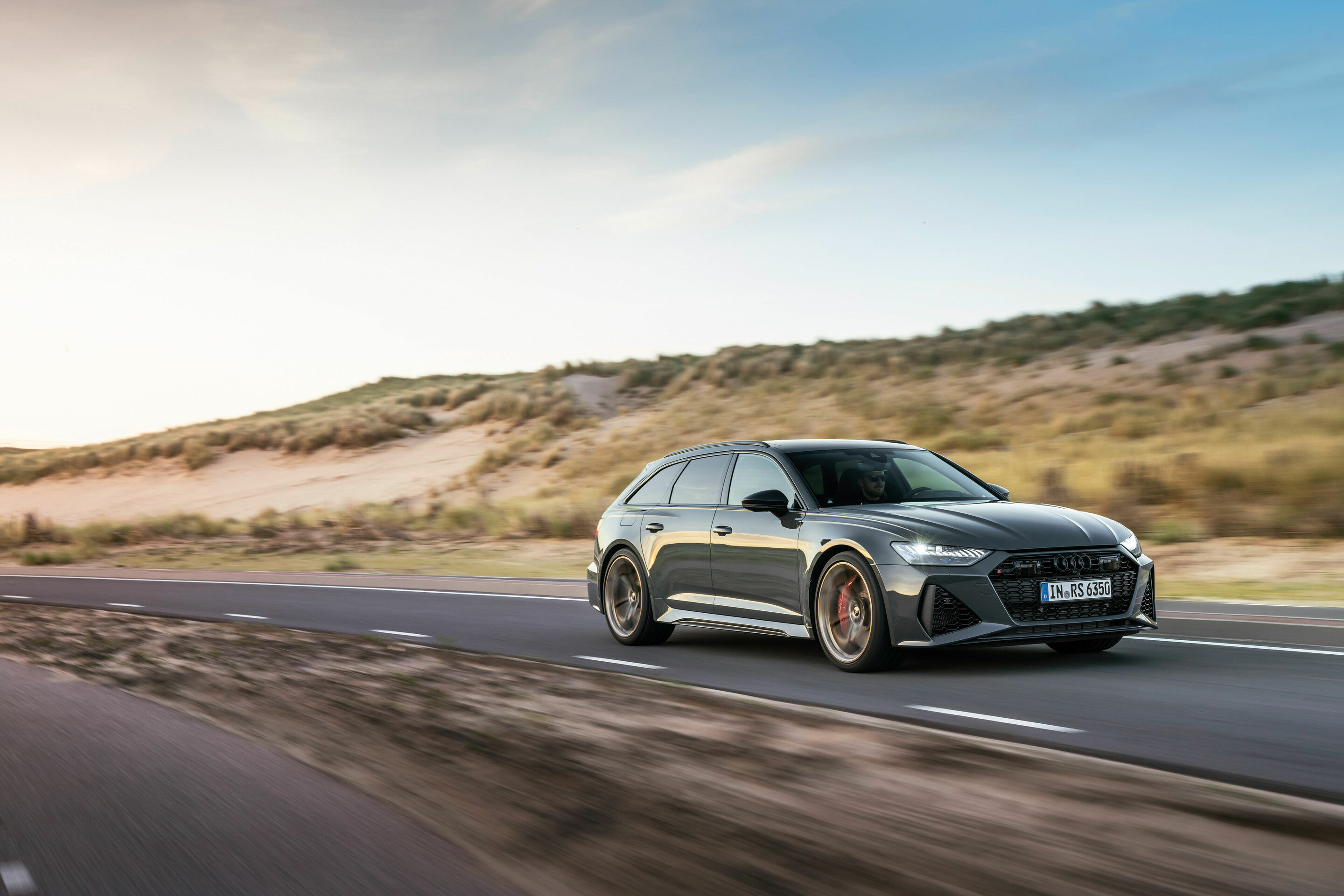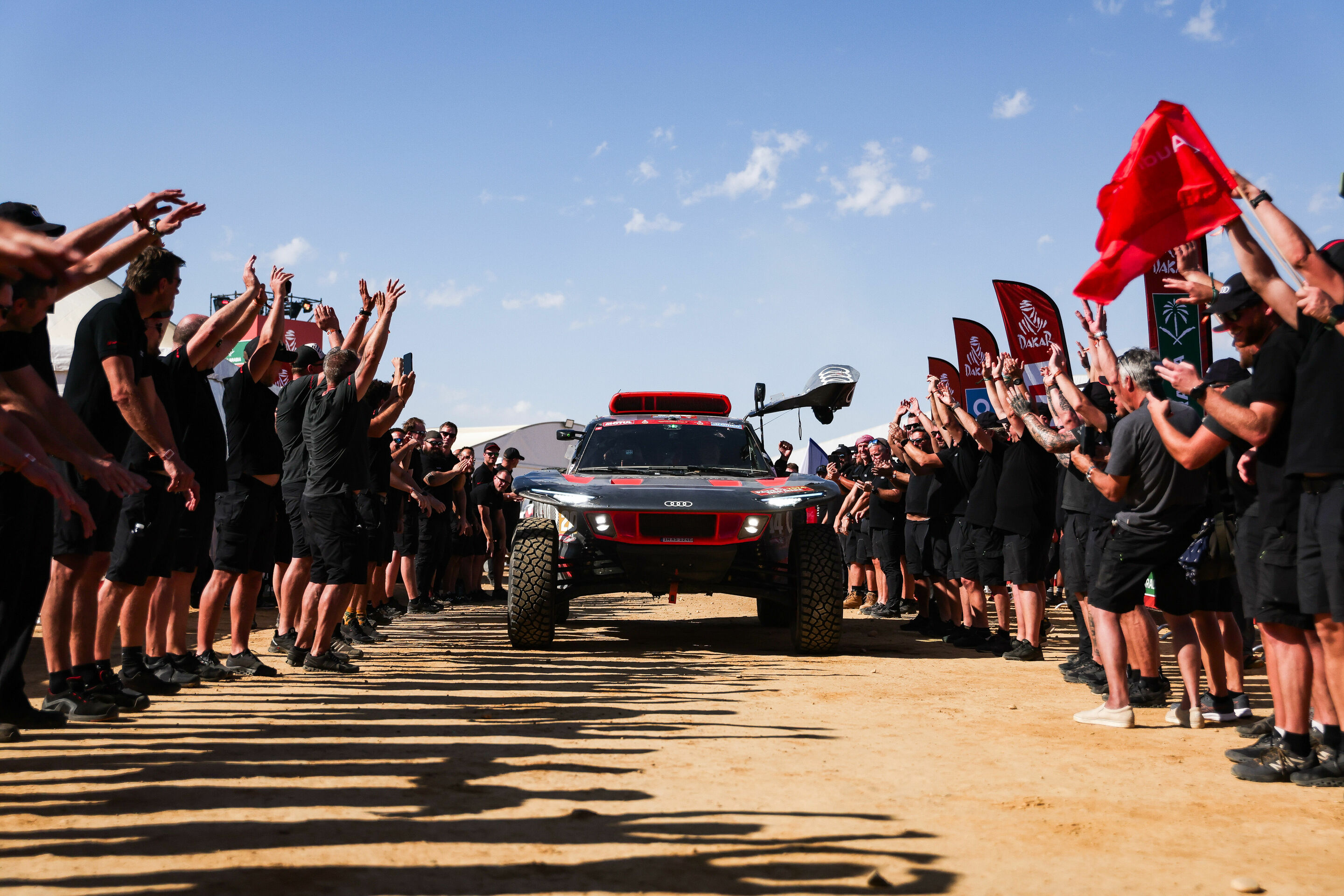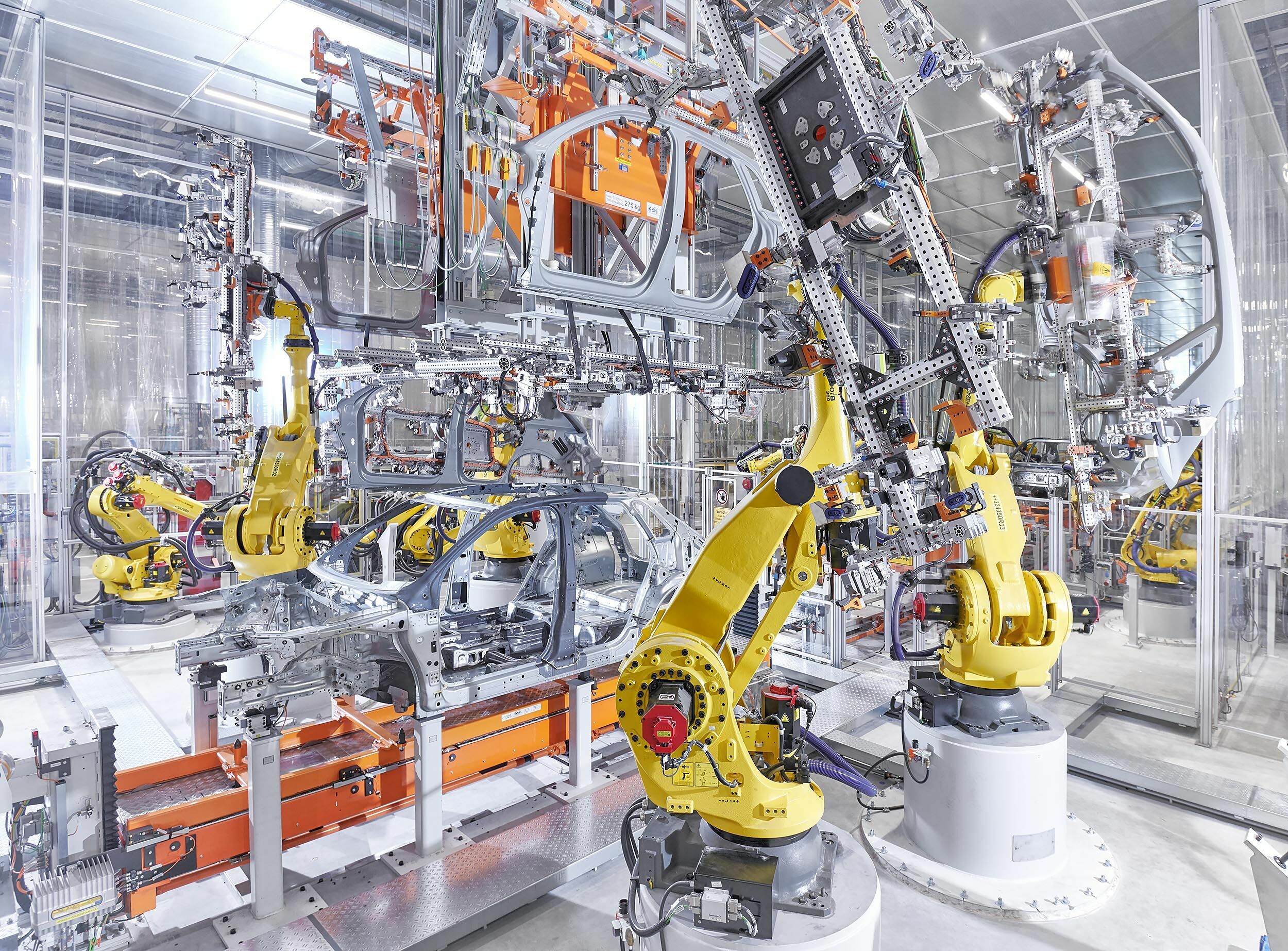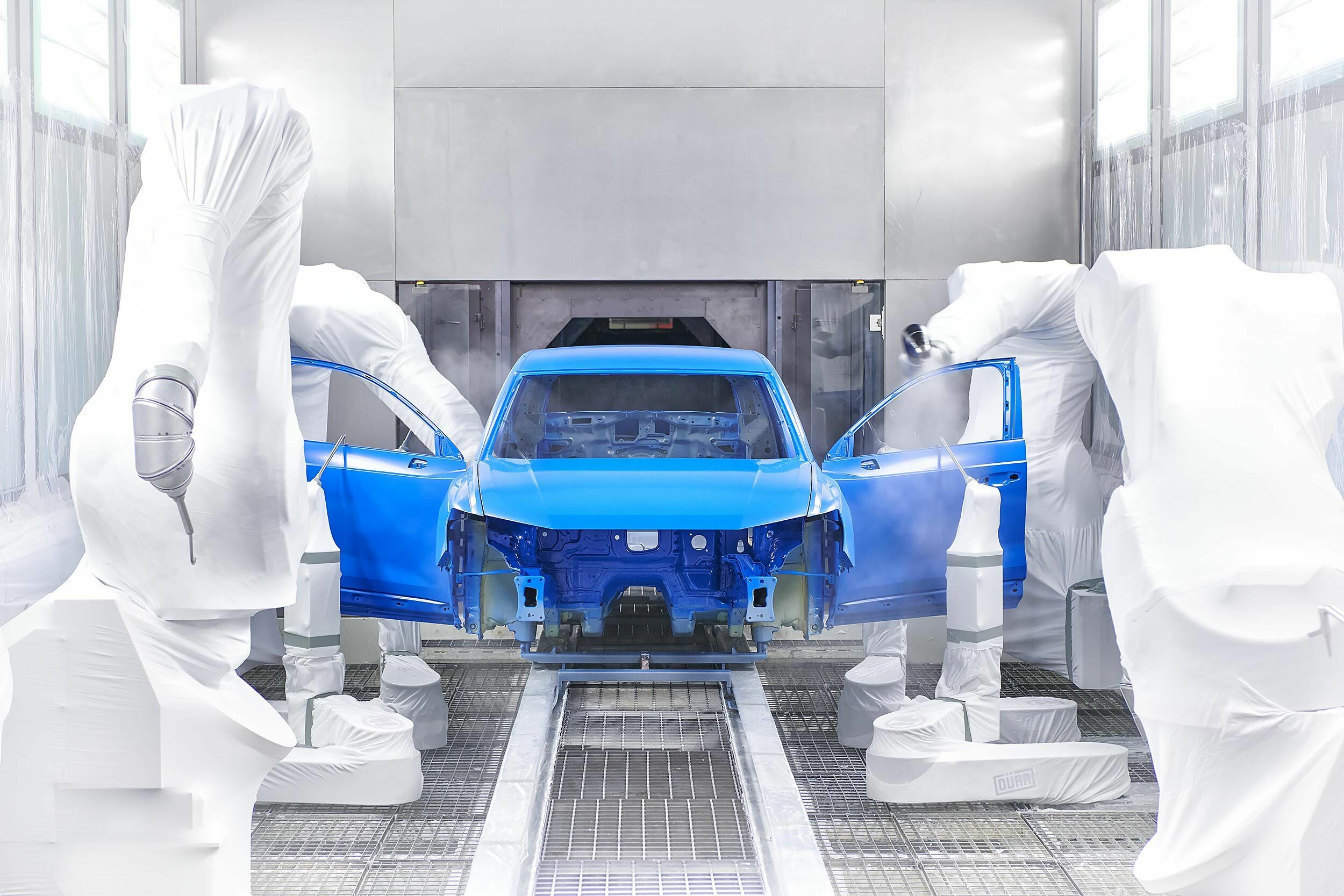Search
All search results for "Audi e-tron GT rs"
(817)

A clear course towards electric mobility
Audi is electrifying its product portfolio step by step. The introduction of the Audi Q6 e-tron and the Audi A6 e-tron in 2024 marked an important step in this transformation. In the medium term, Audi wants to offer an all-electric vehicle in each of its core segments. The ambitious road map towards electric mobility also aims to gradually phase out the production of combustion-engine vehicles. For the electrification of its models, Audi is leveraging Group-wide synergies and has multiple cross-brand platforms at its disposal. The brand with the four rings’ actions promoting sustainable electric mobility include expanding green power and its own charging infrastructure, for example the Audi charging hubs.
“As part of a measure that started last year, we are fundamentally strengthening and rejuvenating our portfolio with numerous new models – again bringing our idea of Vorsprung durch Technik to the street,” says Gernot Döllner, CEO of AUDI AG. “Ultimately, our entire portfolio will be switched over to electric mobility. Along the way, we are positioned robustly and flexibly for the coming years with our new electric cars and a completely new generation of combustion models and plug-in hybrids,” says Gernot Döllner.
A constantly growing product range of fully electric models
With this corporate focus, Audi is expanding its growing product portfolio of fully electric models. In 2021, Audi introduced a compact SUV with the Audi Q4 e-tron series. The all-electric Gran Turismo Audi e-tron GT3 was launched the same year – and has been significantly improved in areas such as range, performance, charging, and handling since 2024.
 Audi in China
Audi in China
Audi in China
The Chinese market has particular strategic importance for Audi. That’s why Audi cooperates with two partners to produce locally in addition to developing market-specific technologies and managing sales of its vehicles directly in the market.

Audi Sport GmbH – formerly quattro GmbH – shapes the sporty, exclusive image of the brand with the four rings. Only the sportiest models bearing the four rings are permitted to use the abbreviations R and RS. In addition to the dynamic models, the company handles customizations through the Audi exclusive program, the Audi collection, and Audi Sport Performance Projects (including customer service for customer racing). Audi Sport GmbH is headed by Rolf Michl, and Audi will enter Formula 1 for the first time in 2026. The independent Audi Formula Racing GmbH was founded as a wholly owned subsidiary of Audi Sport GmbH for this purpose. The subsidiary is responsible for developing and producing the specially designed power unit. The model portfolio – Exceptional performance on four wheels The portfolio currently includes seven models. Customers interested in buying a car from the sporty Audi subsidiary can also have Audi exclusive customize their purchase.
 History
History
1988 On August 13, AUDI AG and First Automotive Works (FAW) sign the agreements for the manufacture under license of the Audi 100 in Changchun. Start of assembly of Audi 100 from imported parts kits at FAW plant and establishment of service network. 1995 Audi acquires 10-percent share in FAW‑Volkswagen joint venture, which was founded in 1991. FAW has 60 percent holding, Volkswagen 30 percent. 1996 Start of production of Audi 200 (an adapted Audi 100 with V6 engine) in FAW‑Volkswagen joint venture. 1999 Start of production of Audi A6 in China. Specially developed for China, the model has an extended wheelbase. 2003 Market launch of Audi A4 manufactured in Changchun. 2005 Market entry of next generation of Audi A6. The long version manufactured in China is given the new name of Audi A6 L. 2006 Foundation of Audi Sales Division (ASD) as independent marketing and sales department in FAW‑Volkswagen joint venture. 2009 Market launch of Audi A4 L, the first long version of a premium automobile in the upper mid-range category. Foundation of Audi China in Beijing as 100% subsidiary of AUDI AG. 2010 Market launch of Audi Q5 manufactured in Changchun. In October, Audi and FAW-Volkswagen celebrate the delivery of the millionth Audi in China. 2012 Market launch of next generation of Audi A6 L. 2013 Opening of Audi City Beijing and Audi China R&D. Market launch of Audi Q3 manufactured in Changchun. 25 years of Audi in China. Delivery of two millionth Audi in China. 2014 Market launch of the Audi A3 Sportback and Audi A3 Sedan models manufactured in Foshan. 2015 Delivery of three millionth Audi in China. With the imported Audi A3 e-tron, the e-tron era dawns in China. Keynote by Audi at first CES Asia in Shanghai. 2016 Market launch of next generation of Audi A4 L. First Chinese brand summit in Shanghai. Start of production of first locally produced PHEV model, the Audi A6 L e-tron.
 Audi’s most important motorsport successes
Audi’s most important motorsport successes
An overview of the most important successes from the factory teams and customer racing.
2024 Winner Dakar Rally (Audi RS Q e-tron) Winner Gulf 12 Hours (Audi R8 LMS GT3) Winner Dubai 24 Hours (Audi R8 LMS GT3) Winner Nürburgring 24 Hours (Audi R8 LMS GT3) Winner Belcar Endurance Championship TA Class (Audi RS 3 LMS) Winner British Endurance Championship (Audi R8 LMS GT3) Winner Coppa Italia Turismo (Audi RS 3 LMS) Winner Extreme Supercars Driven by Dunlop (Audi R8 LMS GT3) Winner FFSA GT4 France Pro-Am (Audi R8 LMS GT4) Winner GT America powered by AWS SRO3 Drivers (Audi R8 LMS GT3) Winner GT Sprint Challenge GT3 (Audi R8 LMS GT3) Winner GT Sprint Challenge GT4 (Audi R8 LMS GT4) Winner IMSA Michelin Pilot Challenge Drivers (Audi RS 3 LMS) Winner International GT Open (Audi R8 LMS GT3) Winner South Island Endurance Series 3 Hour (Audi R8 LMS GT3) Winner Sports Car Championship Canada presented by Michelin TCR (Audi RS 3 LMS) Winner TCR European Endurance (Audi RS 3 LMS) Winner TCR Italy (Audi RS 3 LMS) 2023 Winner Sepang 12 Hours (Audi R8 LMS GT3) Winner Mugello 12 Hours (Audi R8 LMS GT3) Winner Spa 12 Hours (Audi R8 LMS GT3) Winner Monza 12 Hours (Audi R8 LMS GT3) Winner Thunderhill 25 Hours (Audi R8 LMS GT3) Winner 24H Series European Championship GT3 Drivers (Audi R8 LMS GT3) Winner Belcar Endurance Championship (Audi R8 LMS GT2) Winner China Endurance Championship (Audi R8 LMS GT3) Winner Coppa Italia Turismo (Audi RS 3 LMS) Winner Coppa Italia Turismo Endurance (Audi RS 3 LMS) Winner Macau Guia Race (Audi RS 3 LMS) Winner North Island Endurance Series 3 Hour (Audi R8 LMS GT3) Winner Eset Cup Sprint (Audi R8 LMS GT3) Winner Eset Cup Endurance (Audi R8 LMS GT3) Winner GT America powered by AWS GT2 (Audi R8 LMS GT2) Winner GT2 European Series Pro-Am (Audi R8 LMS GT2) Winner GT4 European Series powered by Rafa Rafa Racing Club Pro-Am Drivers (Audi R8 LMS GT4) Winner GT60 powered by Pirelli (Audi R8 LMS GT3) Winner GTC Race GT3 Overall championship (Audi R8 LMS GT3)
 Profile of location
Profile of location
AUDI HUNGARIA Zrt. develops and produces drive systems in Győr, Hungary, for AUDI AG and other companies in the Volkswagen Group. The company produces more than 170,000 Audi vehicles annually and body components for Audi and the Volkswagen Group’s exclusive and sport models. Moreover, Audi Hungaria offers the entire Volkswagen Group various competence-oriented services. Since its foundation in 1993, Audi Hungaria has become one of the country's largest exporters and most profitable companies. Audi Hungaria is also one of the largest foreign investors in Hungary and the biggest employer in the region, with 11,930 employees as of December 31, 2024. Powertrain production The site has manufactured drive systems for Audi and the Volkswagen Group since 1994. Over the years, the company has become the largest powertrain factory in the world. In 2024, Audi Hungaria produced 1,580,991 powertrains in Győr for 35 Volkswagen Group production sites. Of the engines manufactured in 2024, 1,114,473 were three- and four-cylinder gasoline and diesel engines. The site’s employees also produced 13,332 five-cylinder gasoline engines, 228,719 six-cylinder gasoline engines, 67,724 six-cylinder diesel engines, and 3,728 ten-cylinder engines. This was the last year of producing our iconic ten-cylinder engines. Additionally, 151,899 electric axle drive units were manufactured in Győr. All in all, Audi Hungaria built six different gasoline and two diesel engine variants in 2024, as well as two families of electric drive systems with a power spectrum from 120 kW (122 PS) to 280 kW (244 PS). Electric axle drives have been produced in Győr since 2018. In the intervening years, its share of total production volume has risen sharply. The electric motors are installed in the Audi Q8 e-tron, Audi Q6 e-tron, A6 e-tron, and Porsche Macan. The new electric drive systems for the Group’s fully electric models will also be supplied from Győr.
 Company history
Company history
1993 AUDI HUNGARIA MOTOR Kft. is founded as a 100-percent subsidiary of AUDI AG 1994 Start of four-cylinder engine series production; Official opening of the engine plant 1997 Start of V6 engine series production; Start of V8 engine series production 1998 Establishment of the crankshaft and connecting rod processing line; Start of automobile assembly with the Audi TT Coupé 1999 Start of series assembly of the Audi TT Roadster models 2000 Start of production of diesel engines with pump-nozzle technology 2001 Opening of the Engine Development Center; Assembly of the Audi A3/Audi S3 models begins in Győr, produced until 2003 2005 June 2005: 10 millionth engine from Győr; Audi Hungaria toolmaking goes into operation 2007 Start of production of the Audi A3 Cabriolet; Start of series production of four-cylinder common-rail diesel engines; Start of series production of ten-cylinder biturbo engines 2008 Start of series production of twelve-cylinder TDI engines 2010 Opening of the engine start-up center Start of series production of the Audi RS 3 Sportback 2011 April 2011: Production of the 20 millionth engine from Győr July 2011: Groundbreaking ceremony for plant expansion 2012 May 2012: Topping-out ceremony for the new automobile plan Nov. 2012: Start of production of the new 1.2 and 1.4 liter four-cylinder engines 2013 Audi Hungaria opens its expanded plant in June 2013; series production of the Audi A3 Sedan and the Audi A3 Cabriolet begins at the same time; Sept. 2013: 10,000 employees at the plant; Nov. 2013 Double anniversary: 500,000.
 RS e-tron GT (500 kW)
RS e-tron GT (500 kW)
Program for Germany, Status: 09/06/2024 1/2 Audi RS e-tron GT Drivetrain / transmission / battery Drive type All-wheel drive Number of electric motors front axle / rear axle 1 / 1 Max. electrical output in kW 500 Max. electrical output with push-to-pass function in kW 570 Max. electrical output in launch control mode in kW 630 Continuous electrical output in kW 163 Electrical torque output front / rear in Nm (lb-ft) 305 / 590 (225.0 / 435.2) Battery type / number of cells Lithium-Ion /396 Gross / net battery capacity in kWh 105 / 97 Max. charging capacity AC / DC in kW 11 / 320 Max. charging capacity AC / DC optional in kW 22 / 320*** Charging time DC 10-80% nin min 18 Charging time AC 0-100%, 3ph 16A@230V in min 660 On-board voltage 1 in volts 12 Voltage level of the HV battery in volts 800 Suspension / steering / brakes Type and design of front-axle suspension Double-wishbone suspension Type and design of rear-axle suspension Double-wishbone suspension Tires (basic) 245 / 45 R 20 | 285 / 40 R 20 Wheels (basic) Cast aluminum flow forming 9 J x 20 | Cast aluminum flow forming 11 J x 20 Steering Electromechanical steering with speed-dependent power assistance Steering ratio 15.4 Turning circle in m (ft) 11.6 (38.1) Brake system Dual-circuit brake system with black/white split for front/rear axles; ESC/ABS/EBD; brake booster, hydraulic brake assist Brake disk diameter front / rear in mm (in) 410 / 365 (16.1 - 14.4) Performance / range Top speed in km/h (mph) 250 (155.3) (governed) Electrical acceleration, 0-100 km/h (62.1 mph) in s 3.1 Electrical acceleration in launch control mode, 0-100 km/h (62.1 mph) in s 2.8 Electrical range, combined in km (mi) 527 - 599 (327.5 - 372.2) Consumption / emission* Electric power consumption, combined in kWh/100 km (62.1 mi) 21.1 - 18.4 CO2 emissions, combined in g/km (g/mi) 0 CO2 class A Program for Germany, Status: 09/06/2024 2/2 Servicing / guarantee (Germany) Service interval 2 years Vehicle / paint / rust perforation guarantee 2







